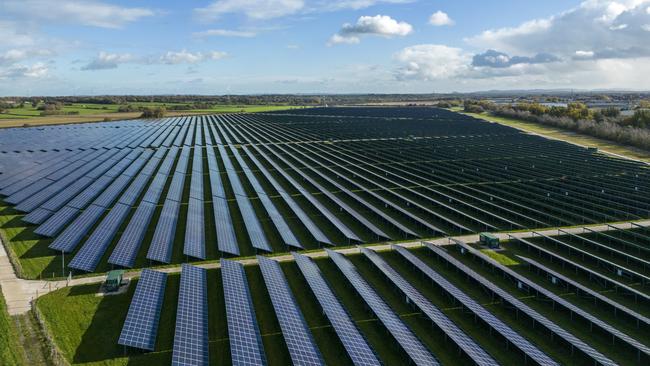Oil demand expected to peak this decade as EVs boom
Energy forecaster raises demand expectations for 2023 due to strong Chinese growth.

Rising demand for crude oil is set to slow to a trickle within five years and peak before the end of the decade, as electric-vehicle uptake surges and developed nations rapidly transition to cleaner sources of energy, according to a prominent energy forecaster.
The International Energy Agency, a group funded by some of the world’s largest oil consumers, expects demand for transport fuels derived from oil such as petrol will be the first to peak before starting a steady decline – hastened by a sharp uptick in EVs and a long-lasting shift to remote working spurred on by the Covid-19 pandemic.
Rapidly growing Asian economies will continue to prop up the global appetite for oil in the coming years, and demand for jet fuel, naphtha and other oil products with industrial uses will continue to tick higher, the IEA said in a report this week.
But even in China, which has long been the powerhouse of global oil demand, the appetite for crude would slow markedly before the end of the decade. India will surpass China as the main driver of oil growth as soon as 2027, the IEA said.

The forecast, which the IEA made in an annual report that considers oil demand as far out as 2028, isn’t the first time the Paris-based group has laid out a timeline predicting a zenith for oil. But it envisages a far more rapid shift away from fossil fuels than previously expected – a shift that has been sharply accelerated by the pandemic and the energy crisis that followed Russia’s invasion of Ukraine.
“The shift to a clean-energy economy is picking up pace, with a peak in global oil demand in sight before the end of this decade,” said Fatih Birol, the IEA’s executive director.
The forecasts are based on sharply diverging energy trends between the developed economies of North America and Europe and rapidly growing developing nations, predominantly those in Asia. Demand for oil in the advanced economies that make up the Organisation for Economic Co-operation and Development is likely to peak as soon as this year due to vast government spending aimed at reconfiguring economies away from fossil fuels.
Demand from those economies is expected to decline to 44.3 million barrels a day by 2028 from its peak of 46.2 million barrels a day in 2023. Demand in non-OECD nations will climb by more than 7 per cent between now and 2028, to 61.4 million barrels a day.

The oil market outlook appears sharply different in the near term as Asian economies ramp up demand following the easing of pandemic-era lockdown measures and major producers constrain output.
“The market could significantly tighten in the coming months” as production cuts from members of the OPEC and its allies took effect, the IEA said.
In a separate monthly report, also released this week, the IEA lifted its forecast for oil demand growth this year by 200,000 barrels a day, to 2.4 million barrels. China is set to account for 60 per cent of that increase. Its demand hit a record of 16.3 million barrels a day in April, while India’s demand for petrol and diesel also hit record levels in May.
The IEA raised its 2023 oil-supply forecasts by 200,000 barrels a day to 101.3 million barrels a day and it expects further supply growth of 1 million barrels a day in 2024. Still, supplies are expected to struggle to keep pace with demand at least in the near term, the IEA expects – a situation that will sharply tighten the oil market and could send prices higher.
Oil demand growth will begin to ease as soon as 2024, however; demand should increase by 860,000 barrels a day next year, the IEA expects. Oil demand will grow by a further 1 million barrels a day in 2025 after which the rate will begin to cool notably, increasing by just 700,000 barrels a day in 2026 and 500,000 barrels a day in 2027.

Some of the IEA’s forecasts have missed the mark in the past. Its prediction that Russian output would be sharply harmed by sanctions following the war in Ukraine has largely not been borne out. It has also called for no new investments in fossil fuels to meet climate targets, a call criticised by the oil-and-gas industry as unrealistic.
It isn’t the only group that foresees waning demand for oil. OPEC has also laid out longer-term forecasts that see oil demand peaking in wealthier nations this decade but remaining more robust in the rest of the world for longer. In October, the IEA had put a timeline for peak oil demand further out, predicting it would happen in the 2030s.
Despite demand slowing, the IEA expects oil producers will continue investing in production, which should leave markets amply supplied in the coming years. Investment in production is bouncing back, with spending on upstream oil-and-gas projects set to reach $US528bn ($775bn) in 2023, the highest level since 2015.
Oil supplies will rise by 5.9 million barrels a day by 2028, with countries outside of the OPEC+ alliance of oil producers dominating supply growth in the next five years – accounting for almost 90 per cent of that increase, according to the IEA.
The Wall Street Journal





To join the conversation, please log in. Don't have an account? Register
Join the conversation, you are commenting as Logout